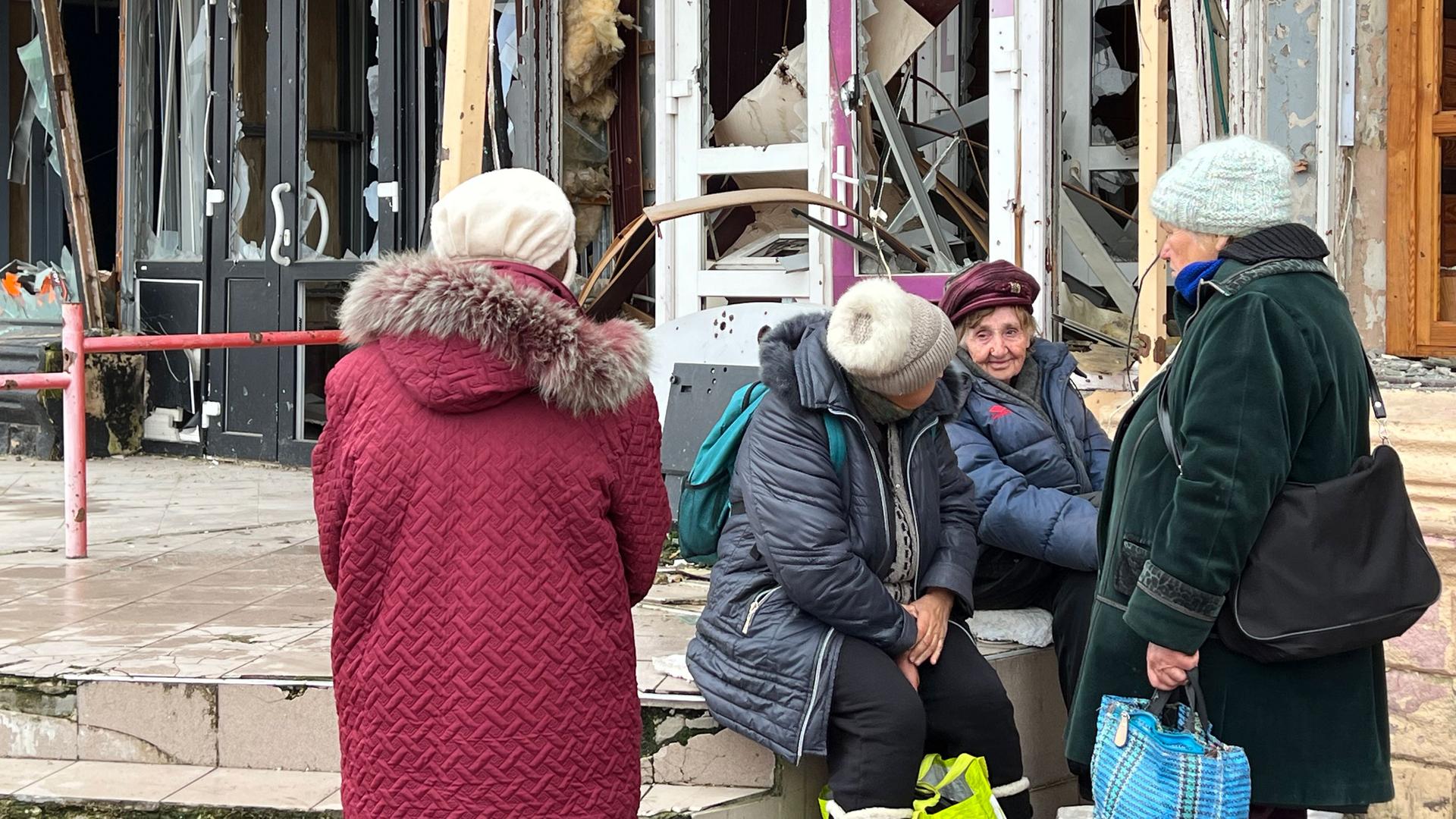In the end, they left — the Russians, who had occupied the city of Izium in northeastern Ukraine.
The city lies roughly 25 miles from the Russian border in the Kharkiv region. In the six months that the Russians were there, Izium became a major operational hub.
They used a railway station to bring in supplies for the troops.
It’s been two months since Ukrainian forces took back this city, but life is far from back to normal. The World visited Izium earlier this month and saw firsthand Russia’s trail of devastation, mines and one of the biggest mass graves discovered since the war began.
The roads to Izium are still full of craters left by explosions.
Ukrainian soldiers manned several checkpoints and on the side of the road, tracks left by armored vehicles and trenches dug up by soldiers in the farm fields still looked fresh.
Closer to Izium, cars have to cross a makeshift bridge because the main bridge was blown up during the fighting.
Active fighting has stopped in Izium, leaving whole apartment blocks gutted. Intact windows are rare and there is rubble everywhere.

In the days following the recapture of Izium, the atrocities committed by the Russians slowly began to emerge.
Ukrainian forces discovered several mass graves, including one that contained more than 400 bodies. They also found several torture sites, one of them at a local police station.

‘It will take years to return to normal’
Witnesses told The World that when the Russian forces came to town last March, it was as if life stopped.
They rounded up anyone they thought had pro-Ukrainian views, they said, and it’s still not clear how many exactly disappeared.
Valentyna Dovhopola moved to Izium from a nearby village after she got married. She and her husband built a house and raised their children here.
Dovhopola said she lost her grandson in shelling last June. They wanted to bury him next to his grandfather, she said, but they haven’t found his body.
Dovhopola’s is a familiar story. Under Russian occupation, residents of Izium didn’t even have the chance to bury or mourn their loved ones.
Izium’s mayor, Valeriy Marchenko, told The World in an interview that although his city has gone through a lot, things are improving.
He said most of the electricity and water has been restored. Banks are slowly reopening, and people have started to return.
According to Marchenko, in September, when the city was recaptured, 15,000 people lived in Izium. Now, it’s closer to 20,000. The pre-war population was about 50,000.
However, the next few months are going to be critical, he added. Winters in Izium are harsh and many of the residential buildings don’t have heating or are unsafe for people to return to.

To help, his office has offered to relocate residents into big military tents. But many have refused, preferring to stay in whatever is left of their own homes, Marchenko said.
Marchenko himself wasn’t in the city when it fell to the Russians last March. He said when he returned, he didn’t recognize Izium at all. So much had changed.
He was struck by how quiet and deserted it was.
The Russians had imposed a 24/7 curfew, he said, and many residents hid in their homes and basements, not leaving for weeks on end.
When the Ukrainians took back the city, those hiding in the basements didn’t even know the Russians had left.
It will take years for Izium to return to normal, he said.

Demining and removing unexploded ordnances left by the Russian military is a daunting task in Izium and other liberated areas in Ukraine.
In Izium, frequent signs with skulls and bones warned of the danger.
“There are mines everywhere,” Marchenko said, “even farmers can’t go back to their fields because of them.”
It’s unclear how long it will take to clear all of it. For context, he explained, “before the war, we were still finding unexploded ordnances from World War II. That’s how long these things can take.”
